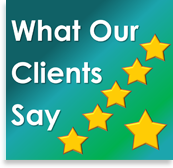
TAKE THE MUZZLE OFF & LET THE WORKPLACE SPEAK: THE POWER OF IMBEDDED INFORMATION
In a visual workplace, information is converted into simple, commonly-understood visual devices, installed in the process of work itself—as close to the point of use as possible. The result is the transformation of a formerly mute work environment into one that speaks—clearly and precisely—about how to perform error-free work safely, smoothly, reliably, and on-time.
What happens when the workplace speaks? What happens when formerly voiceless work stations, equipment, tools, machines, and material can communicate freely and precisely with us? What happens when we can know vital information—the details of work—at a glance, without speaking a word, without asking (or answering) a single question?
When a company becomes a fully-functioning visual workplace, each employee has instant on-demand access to information vital to one’s own work and the enterprise is infused with intelligence you can see—intelligence that illuminates and drives the corporate intent. The result is benefits you can take to the bank.
Stunning floor borders in this food manufacturer in Australia show us the walk-lanes while alerting forklift drivers to pedestrian traffic.
In a visual enterprise, every section of the floor, every bench, work surface, hand tool, part, machine, rack, cabinet, and bin is equipped to make a contribution to the collective purpose that is beyond its mere existence—because now that item can visually communicate vital information to anyone and everyone who needs it as they need it. There are no exceptions. In a visual workplace, floors do not exist simply to walk on or hold things up. They function—showing us where it is safe to walk, where materials are, and where we are supposed to work.
Benches are not merely surfaces on which to place parts and tools. Through the visual where, benches tell the exact location of the “things” of work—or show us that they are missing. A simple address can even save lives, as you see in the example to the left. Departments need not
Visually highlighting the “CIS” in this drug address helps health staff minimize mix-ups.
be merely a collection of furniture and things. When we give them a voice through workplace visuality, they become productive allies that manage themselves and the enterprise as well. Tools are not restricted to merely helping us convert material. They can also tell us how to use them properly, when they need to be calibrated, and when they are unsafe. In a visual workplace, tools become vocal partners in the production process. And when we create equipment that speaks, machines can assist in their own quick changeovers.
In a full-functioning visual workplace, the things of the physical workplace and the workplace itself contribute to the making of profit in ways that go far beyond their mere presence. Through visuality, they become active, sustaining partners in the process of work and day-to-day improvement.
In this cell, operators leave dull tools in the red location on the machine face; maintenance returns them, sharpened, to the green location.
Imagine that any employee—whether a newcomer, veteran or temp—could safely, effectively, and efficiently run a new process in your company with only a simple orientation because that process is visually capable—with vital performance information available instantly at point of use. What would that mean for your bottom line?
Go further. What if your entire enterprise—from sales and customer service through design, production, and shipping—were visually capable of responding to changes in minutes instead of days? Would that improve your competitive advantage?
Look at the solutions in this article. Can you see the connection between them and applications that are right for your company—whether factory, bank, military depot or hospital? Do you begin to see the great power of information that is imbedded into the process of work, visually available to everyone and anyone who needs it, as close to the point of use as possible? If you do, you are already on your way to workplace visuality.




